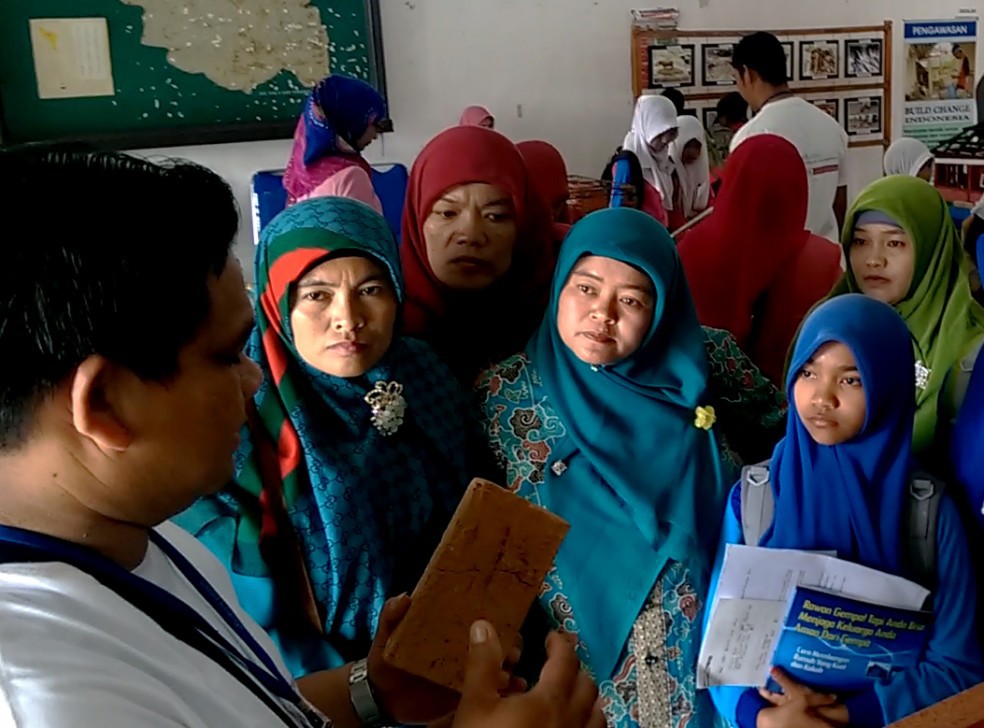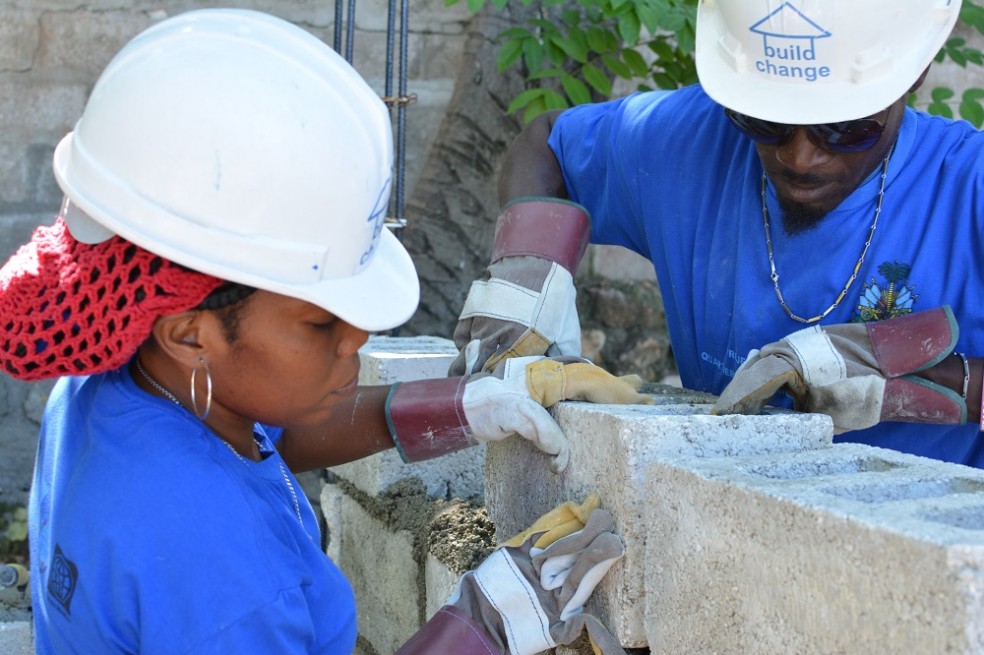A Study into the Participation of Females in On-the-Job Training Delivered by Build Change and UNOPS
Going the Extra Mile, to Rebuild Nepal…
International Women in Engineering Day 2018
To live far away from home, in a different community and culture, and contribute towards a nation’s rebuilding after a disaster requires courage, character and determination for any young person. In Nepal’s traditionally patriarchal society, it can be especially challenging for young women to seize such opportunities. On top of this, success becomes even more challenging within an industry such as engineering which is still perceived in many countries as a “man’s profession.”
Press for Progress: Female Architects as Creative Drivers of Post-Earthquake Reconstruction in Nepal
“Press for Progress” is our motto this month as we celebrate Women’s History Month. Women have always been a driving force behind human progress, and this month we celebrate their contributions to the world.
With their exceptional abilities to create, design, and transform, women are already at the forefront in the field of architecture. In Nepal, as elsewhere in the world, more and more women are entering this field. Moreover, they have been using their architectural skills to design earthquake-resistant houses after the devastating earthquakes of April 2015,
Technology in Post-Disaster Reconstruction: How One Woman is Contributing to Thousands of Safer Homes in Nepal
Women are leading the way towards the recovery of earthquake-affected communities in Nepal. Nearly 750,000 buildings were damaged or destroyed in the earthquakes in early 2015, leaving families in temporary shelters and students learning in makeshift school buildings. Rebuilding this infrastructure so that it does not collapse again in a future earthquake takes more than just bricks and money. Access to professional engineers and trained builders, along with other information on safe building techniques,
On Being Women in Engineering
Women play a crucial role in post-disaster reconstruction. In Nepal, where the population is 51% female, this has become especially apparent. Many women have taken on new roles and responsibilities since the earthquakes in 2015, and are at the forefront of permanent reconstruction efforts to build a safer future for their families, communities, towns, and cities.
At Build Change, we have always placed a special emphasis on working with, hiring,
RMS Impact Trek Nepal 2017: Exploring Bhimtar and Eklephant
Contributed by Caroline Fox
On our first day in the field we headed up to Bhimtar, a rural fishing community about 45 minutes from the main road and where we are staying. Bhimtar was badly impacted by the earthquake, with most houses completely destroyed. Since the earthquake occurred just before midday on a Saturday, most people were down by the nearby river and children were not in school. All buildings in the village were destroyed,
Not Just Houses, but Homes: What it means to be “homeowner-driven”
Contributed by Hailey Mitchell
Have you ever thought about building your own house? Not just selecting the finishes, assembling IKEA furniture, or maybe laying a bathroom tile or two. I mean really starting from scratch: removing soil, mixing concrete (by hand), tying steel rebar, laying blocks… Would it change the way you felt about the building? Now imagine doing this in the wake of immense tragedy while you are living in a temporary shelter.
Community Education in Takengon, Indonesia
Over 150 adults and 100 children participated in our Better Building Material community event in Takengon, Indonesia in December 2014. We have been working with 200 local brick-makers, mostly women, to help them produce better quality bricks.
Houses and schools built with poor-quality bricks or concrete blocks are likely to collapse during natural disasters. Better bricks and concrete blocks make safer houses and schools.
We provide on-the-job training for small businesses that manufacture bricks and blocks to improve the quality of their products.
Vocational Training Changes Lives
“I want to advise other young women like me to not choose only nursing, accounting, or secretarial work. Dare yourself to learn other trades,” Widleine George says. She stands outside in her construction training station, where she demonstrates proper techniques to trainees and oversees the masons’ progress. “I receive a lot of respect because of my position, because it’s not typically a woman’s job,” she says.
“I want to advise other young women like me to not choose only nursing,
What A Little Girl Hears When You Tell Her She’s Pretty
We are inspired by this Verizon video, described in the Huffington Post.
“A new Verizon commercial cites a sad statistic by the National Science Foundation: 66 percent of 4th grade girls say they like science and math, but only 18 percent of all college engineering majors are female.
People have offered many potential explanations for this discrepancy, but this ad highlights the importance of the social cues that push girls away from math and science in their earliest childhood years.”
Girls in STEM: White House Science Fair
Girls in STEM, featuring young women scientists and engineers who wowed the President and the nation at the White House Science Fair in February, shines a spotlight on these extraordinary young role models and their exciting projects — ranging from a machine that detects buried landmines, to a prosthetic hand device, to a lunchbox that uses UV light to kill bacteria on food.
http://www.pbs.org/newshour/rundown/girls-stem-take-center-stage-white-house-science-fair/




